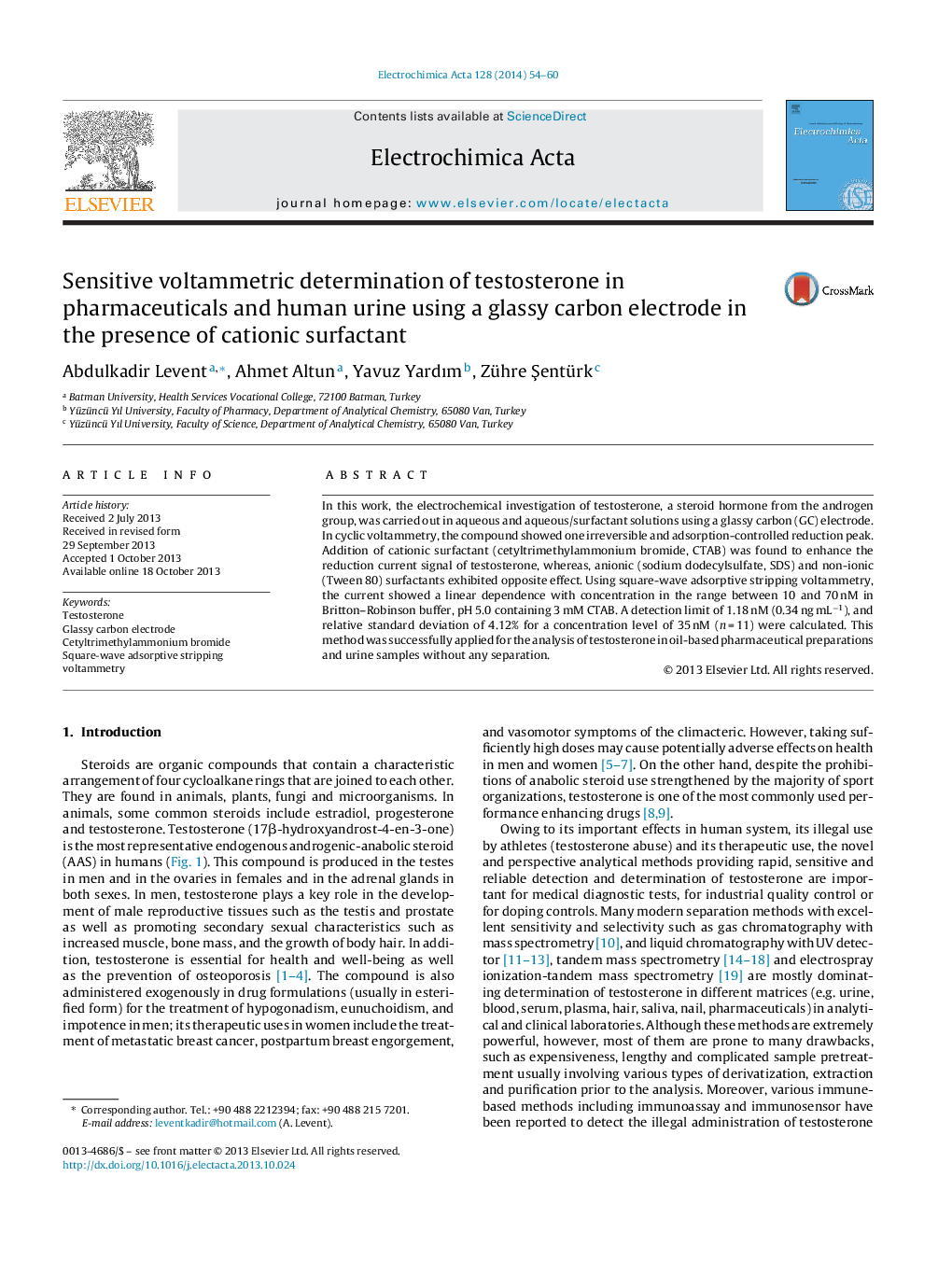| Article ID | Journal | Published Year | Pages | File Type |
|---|---|---|---|---|
| 186073 | Electrochimica Acta | 2014 | 7 Pages |
•The first report on the reduction and determination of testosterone by a voltammetric technique in surfactant media.•Usefulness of glassy carbon electrode without any modification (except adding cationic surfactant to the solution).•More improved sensitivity (detection limit of 1.18 nM) over a previously reported voltammetric method.•Practical applicability by the direct assays of oil-based pharmaceuticals and urine samples.
In this work, the electrochemical investigation of testosterone, a steroid hormone from the androgen group, was carried out in aqueous and aqueous/surfactant solutions using a glassy carbon (GC) electrode. In cyclic voltammetry, the compound showed one irreversible and adsorption-controlled reduction peak. Addition of cationic surfactant (cetyltrimethylammonium bromide, CTAB) was found to enhance the reduction current signal of testosterone, whereas, anionic (sodium dodecylsulfate, SDS) and non-ionic (Tween 80) surfactants exhibited opposite effect. Using square-wave adsorptive stripping voltammetry, the current showed a linear dependence with concentration in the range between 10 and 70 nM in Britton–Robinson buffer, pH 5.0 containing 3 mM CTAB. A detection limit of 1.18 nM (0.34 ng mL−1), and relative standard deviation of 4.12% for a concentration level of 35 nM (n = 11) were calculated. This method was successfully applied for the analysis of testosterone in oil-based pharmaceutical preparations and urine samples without any separation.
